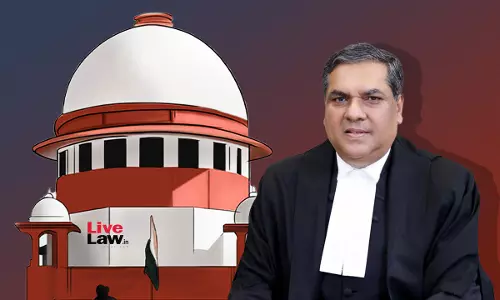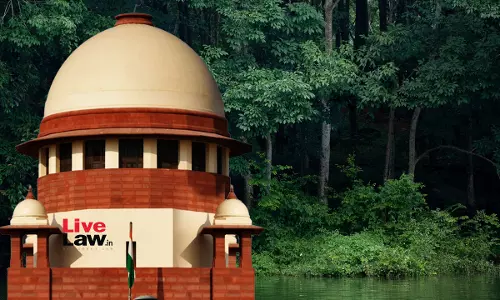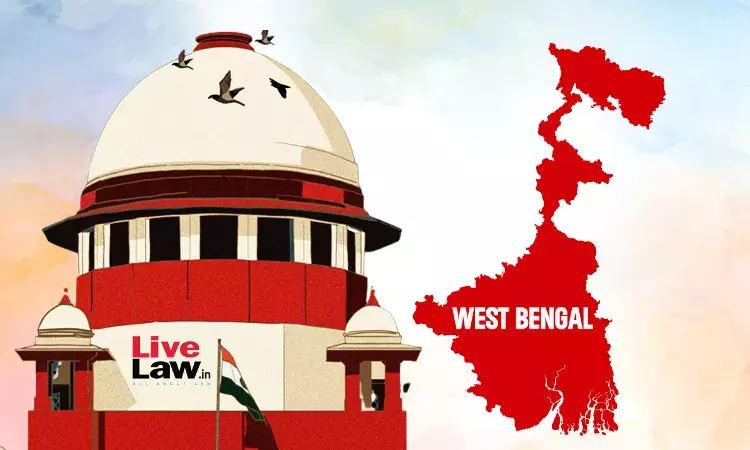Constitution Day Special Quiz : Answers To MCQs On Constitution [Part 2]
![Constitution Day Special Quiz : Answers To MCQs On Constitution [Part 2] Constitution Day Special Quiz : Answers To MCQs On Constitution [Part 2]](https://www.livelaw.in/h-upload/2023/01/26/1500x900_455707-369419-red-fort-and-constitution-of-india.webp)
The answers to the Constitution Day Special Quiz [Part 2] are here . Part 1 can be read here.1. What is the significance of Constitution Day celebrated on 26th November in India?a. Adoption of the Constitutionb. Enactment of the first constitutional amendmentc. Commencement of the Constitutiond. Ratification of fundamental rightsAnswer : a. Constitution Day commemorates the adoption of the...
The answers to the Constitution Day Special Quiz [Part 2] are here . Part 1 can be read here.
1. What is the significance of Constitution Day celebrated on 26th November in India?
a. Adoption of the Constitution
b. Enactment of the first constitutional amendment
c. Commencement of the Constitution
d. Ratification of fundamental rights
Answer : a. Constitution Day commemorates the adoption of the Indian Constitution on 26th November 1949.
2. Who was the Chairman of the Drafting Committee of the Indian Constitution?
a. Jawaharlal Nehru
b. Sardar Patel
c. Dr. B.R. Ambedkar
d. Rajendra Prasad
Answer : c. Dr. B.R. Ambedkar served as the Chairman of the Drafting Committee, which was responsible for framing the Indian Constitution.
3. When was the Constituent Assembly of India formed?
a. 1945
b. 1946
c. 1947
d. 1948
Answer : b. The Constituent Assembly of India was formed in 1946 to draft the Constitution for independent India.
4. How many total members were part of the Constituent Assembly of India?
a. 284
b. 296
c. 389
d. 330
Answer : c.
5. Who was the President of the Constituent Assembly?
a. Jawaharlal Nehru
b. Dr. Rajendra Prasad
c. Sardar Patel
d. Dr. B.R. Ambedkar
Answer : b.
6. Which schedule of the Indian Constitution contains the list of states and union territories?
a. First Schedule
b. Second Schedule
c. Third Schedule
d. Fourth Schedule
Answer : a.
7. Which part of the Indian Constitution deals with Fundamental Rights?
a. Part I
b. Part II
c. Part III
d. Part IV
Answer : c.
8. The concept of Judicial Review in the Indian Constitution is borrowed from which country?
a. United Kingdom
b. United States
c. Australia
d. Canada
Answer : b.
9. Which Article of the Indian Constitution empowers Parliament to admit new States into the Union of India?
A) Article 2
B) Article 3
C) Article 4
D) Article 5
Answer : a.
10. Under Article 3, who has the power to initiate the proposal for the formation of a new State or the alteration of the boundaries of existing States?
A) President
B) Prime Minister
C) Governor of the concerned State
D) Chief Minister of the concerned State
Answer : a.
11. Which Article of the Indian Constitution explicitly defines "State" for the purpose of enforcement of Fundamental Rights?
A) Article 12
B) Article 14
C) Article 21
D) Article 32
Answer : a.
12. Which Article of the Constitution deals with the Right to Equality?
a. Article 12
b. Article 14
c. Article 19
d. Article 21
Answer : b.
13. Which case clarified that the Right to Life and Personal Liberty under Article 21 includes the right to live with human dignity?
A) AK Gopalan v. State of Madras
B) Maneka Gandhi v. Union of India
C) Keshavananda Bharati v. State of Kerala
D) Francis Coralie Mullin v. Administrator, Union Territory of Delhi
Answer : D.
14. Under Article 25, which test is applied to determine whether a belief constitutes a religion or not for the purpose of protection?
A) The Doctrine of Essential Practices
B) The Rational Nexus Test
C) The Public Order Test
D) The Morality Test
Answer : A.
15. The concept of "Equal Protection of Laws" under Article 14 is borrowed from which country's constitution?
A) United Kingdom
B) United States
C) France
D) Australia
Answer : B.
16. What is the significance of the term "reasonable classification" in the context of Article 14?
A) It allows for differential treatment without a rational basis
B) It prohibits any form of classification
C) It permits classification for a legitimate purpose
D) It only applies to economic legislation
Answer : C.
17. Which of the following practices is specifically prohibited under Article 23 of the Indian Constitution?
A) Compulsory service imposed by State for public purpose
B) Child labor
C) Bonded labor
D) Contract labor
Answer : C.
18. Article 24 prohibits the employment of children below a certain age in hazardous occupations. What is the prescribed age?
A) 12 years
B) 14 years
C) 16 years
D) 18 years
Answer : B
19. Which of the following statements is correct regarding the power to amend the Constitution under Article 368?
A) It can be done by a simple majority in both Houses of Parliament
B) It requires a two-thirds majority in both Houses of Parliament
C) It can be done by a special majority in the Lok Sabha
D) It requires the consent of all State Legislatures
Answer : B.
20. Which Article of the Indian Constitution emphasises that the Directive Principles of State Policy are not enforceable by any court?
A) Article 37
B) Article 39
C) Article 42
D) Article 47
Answer : A.
21. The concept of "Welfare State" is closely associated with which Directive Principle of State Policy?
A) Article 39
B) Article 41
C) Article 43
D) Article 48
Answer : A
22. Article 44 of the Indian Constitution relates to which Directive Principle of State Policy?
A) Promotion of educational and economic interests of Scheduled Castes, Scheduled Tribes, and other weaker sections
B) Uniform civil code for the citizens
C) Right to work, to education, and to public assistance in certain cases
D) Participation of workers in the management of industries
Answer : B
23. According to Article 39(a), what is the directive principle related to?
A. Right to Equality
B. Right to Education
C. Right to Work
D. Right to Life
Answer : C
24. Which amendment to the Indian Constitution inserted the Fundamental Duties?
a. 40th Amendment
b. 42nd Amendment
c. 44th Amendment
d. 46th Amendment
Answer : b.
25. Which Constitutional Amendment is known as the 'Mini Constitution of India'?
a. 42nd Amendment
b. 44th Amendment
c. 46th Amendment
d. 52nd Amendment
Answer : a.
26. Under which article of the Indian Constitution is the provision for the President's Rule in a state mentioned?
a. Article 356
b. Article 352
c. Article 360
d. Article 370
Answer : a.
27. The President of India is elected by an electoral college consisting of:
a. Lok Sabha and Rajya Sabha
b. Lok Sabha, Rajya Sabha, and State Legislative Assemblies
c. Rajya Sabha and State Legislative Assemblies
d. Lok Sabha, Rajya Sabha, and State Governors
Answer : b.
28. Which Schedule of the Indian Constitution contains the list of recognized languages?
a. First Schedule
b. Second Schedule
c. Eighth Schedule
d. Tenth Schedule
Answer : c.
29. The power to decide disputes between the States and the Centre falls under:
a. Original Jurisdiction of the Supreme Court (Article 131)
b. Appellate Jurisdiction of the Supreme Court
c. Advisory Jurisdiction of the Supreme Court
d. Writ Jurisdiction of the Supreme Court (Article 136)
Answer : a.
30. Which Constitutional Amendment introduced the anti-defection law in India?
a. 52nd Amendment
b. 56th Amendment
c. 62nd Amendment
d. 68th Amendment
Answer : a.
31. Who presides over the joint sitting of both Houses of Parliament?
a. President
b. Prime Minister
c. Speaker of Lok Sabha
d. Chief Justice of India
Answer : c.
32. The 73rd Amendment to the Constitution pertains to:
a. Panchayati Raj Institutions
b. Municipalities
c. Fundamental Rights
d. Directive Principles of State Policy
Answer : a.
33. Which Constitutional Amendment granted voting rights to citizens aged 18 and above?
a. 61st Amendment
b. 62nd Amendment
c. 63rd Amendment
d. 64th Amendment
Answer :a.
34. According to Article 85, what is the maximum gap permissible between two sessions of Parliament?
A) Three months
B) Four months
C) Six months
D) One year
Answer : c.
35. The President can make a reference to the Supreme Court for an advisory opinion under which Article?
a. Article 143
b. Article 144
c. Article 145
d. Article 146
Answer : a.
36. What is the significance of the Ninth Schedule in the Indian Constitution?
A) It contains the list of Scheduled Tribes in India
B) It provides protection to laws from judicial review
C) It specifies the allocation of powers between the Union and States
D) It deals with the powers of the President
Answer : B.




